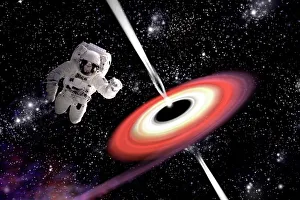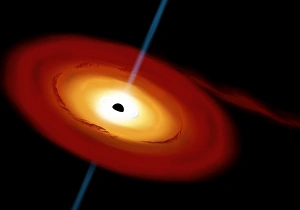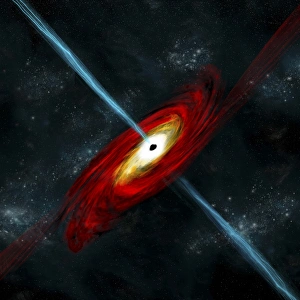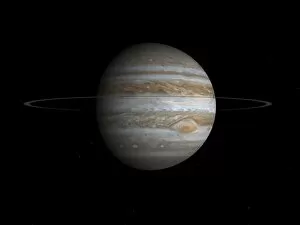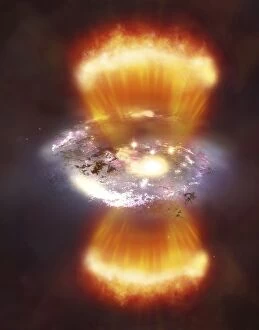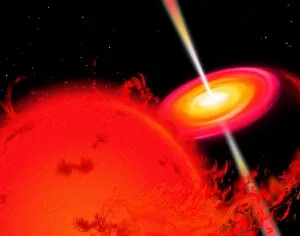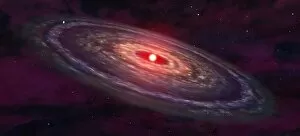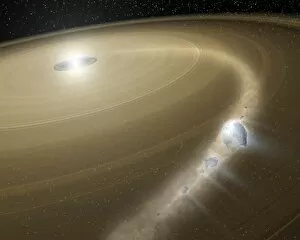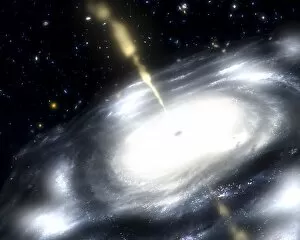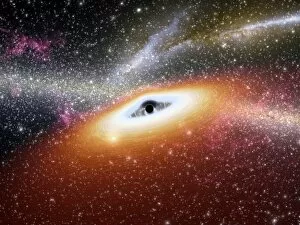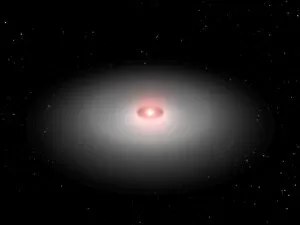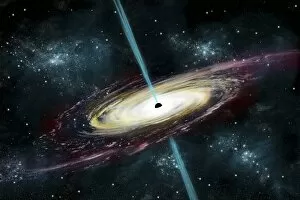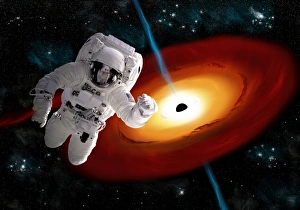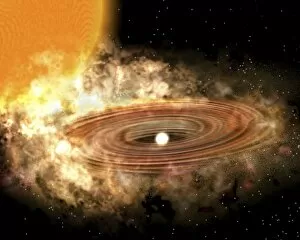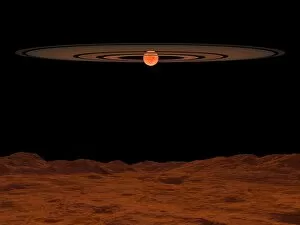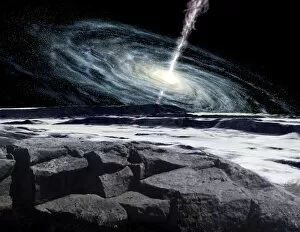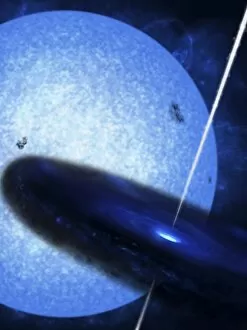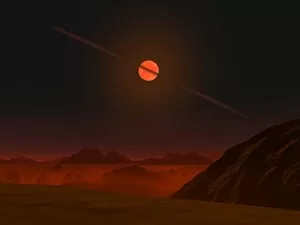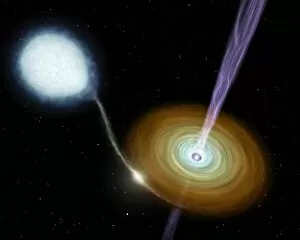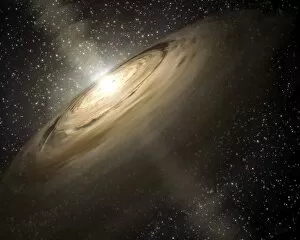Circumstellar Disks Collection
"Circumstellar Disks: Unveiling the Mysteries of Celestial Evolution" In the vast expanse of outer space
All Professionally Made to Order for Quick Shipping
"Circumstellar Disks: Unveiling the Mysteries of Celestial Evolution" In the vast expanse of outer space, artists have envisioned captivating scenes that shed light on the enigmatic phenomenon known as circumstellar disks. These ethereal illustrations transport us to a realm where astronauts find themselves hurtling towards black holes, their presence marked by mesmerizing accretion disks. One such depiction showcases a black hole surrounded by its swirling accretion disk in interstellar space, hinting at the immense gravitational forces at play. Another artwork portrays a red giant star orbiting a black hole, illustrating the intricate dance between celestial bodies. Zooming out from individual stars and black holes, we encounter protostellar disks – cosmic nurseries nurturing nascent planets. The artist's concept of Jupiter reminds us of our own solar system's gas giants and their potential origins within these primordial discs. Venturing further into deep space, we stumble upon galaxies nestled within glowing hydrogen blobs. This breathtaking image captures both the grandeur and fragility of celestial structures as they evolve over billions of years. The Cygnus X-1 system comes alive through an artist's illustration – unveiling binary star systems wherein one massive companion feeds off its partner's matter through an accretion disk. Such symbiotic relationships shape our understanding of stellar evolution. Not limited to visible light alone, gamma rays emanating from galactic nuclei captivate scientists' attention. These high-energy emissions provide crucial insights into astrophysical processes occurring within circumstellar environments. Delving closer to home, we witness how planets gracefully orbit within dusty rings encircling stars like Beta Pictoris. This diagram elucidates planetary formation mechanisms while showcasing nature's artistic flair in shaping cosmic landscapes. Lastly, an awe-inspiring scene depicts a comet being torn apart around a dead star – reminding us that even after death, celestial objects continue to exert influence on their surroundings.

